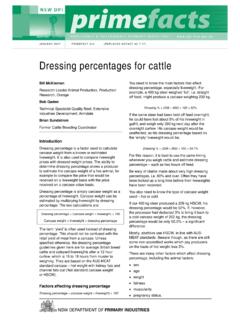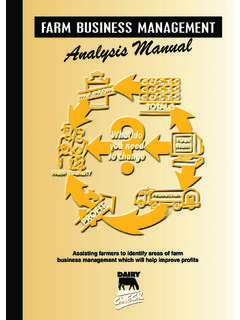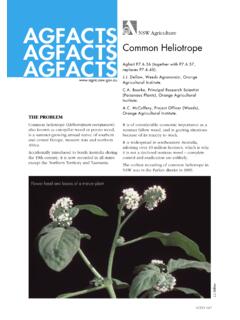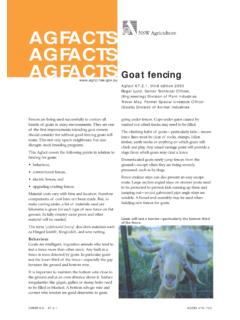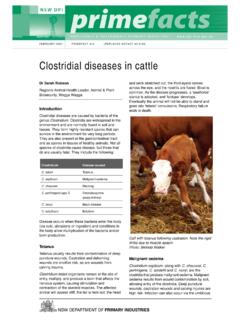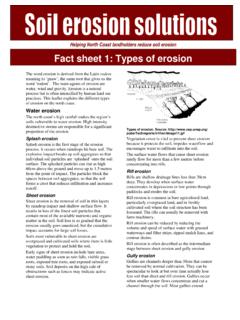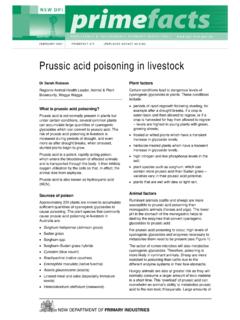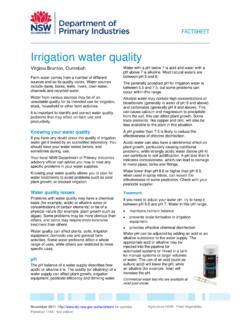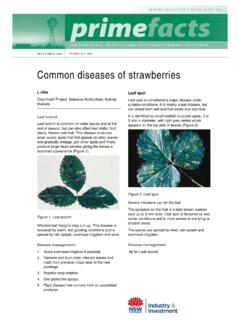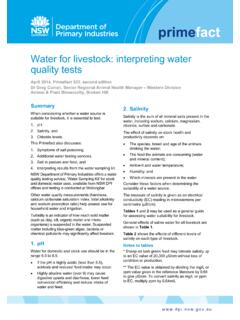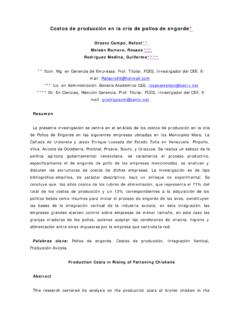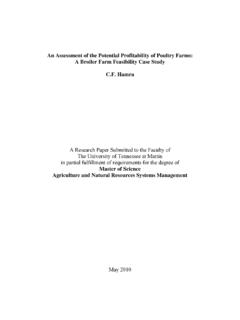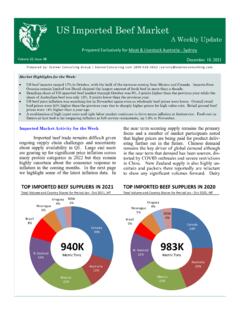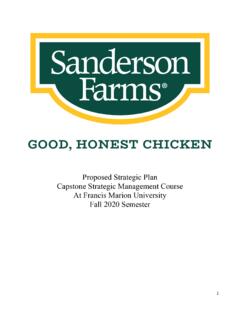Transcription of Best practice guidelines for using poultry litter on pastures
1 best practice guidelines for using poultry litter on pastures Neil Griffiths, District Agronomist, Industry Development pastures , Paterson (Tocal) WARNING: poultry litter and manure may contain discarded or spilled feed containing meatmeal. It is illegal to feed animal-derived meal to ruminants, or allow them access to it, in order to prevent the possible spread of exotic animal diseases such as BSE. Therefore stock must not be fed on, or have access to, bulk litter . poultry litter and manure can contain feathers, dead birds or parts of birds. The feeding to stock of dead birds or their parts and feathers is also illegal.
2 Obvious bird tissue or feathers should be removed before spreading litter on pastures . This will also reduce the risk of botulism in grazed stock. Summary Bulk poultry litter can be the basis of very productive and valuable pasture and agricultural production when used wisely. It also has potential to create human and animal health risks, plus cause dust, smell and water pollution if it is not stored, spread and managed in an appropriate manner. These guidelines aim at ensuring that you use poultry litter wisely to optimise pasture production and minimise the risk of problems concerning stock health, stock feeding bans, pollution and the environment. poultry litter may contain human and animal pathogens, so good hygiene has to be practised when handling litter .
3 Animals must be prevented from gaining access to litter . Care should be taken to prevent poultry litter contaminating fresh produce that would not be cooked prior to eating. The nutrient content of poultry litter varies. This variability must be reflected in its price compared with other forms of fertiliser. poultry litter contains the major nutrients nitrogen, phosphorus and potassium, but it is not perfectly balanced for pasture requirements. It does not contain enough nitrogen for grass pastures compared with the phosphorus supplied. Wise fertiliser use combines nutrient budgeting ( knowing what nutrients are being used and removed from a paddock) with soil testing (to check that the desired soil nutrient levels are being achieved).
4 poultry litter is light and will wash off paddocks easily. Take care when storing and spreading poultry litter to prevent it entering watercourses or moving to off-target areas. It may sometimes be possible to plough it into the soil; however, this practice destroys established pasture and increases soil erosion risk. Spreading litter onto a recently grazed or harvested pasture with 5 10 cm of stubble will help to hold the litter in place and reduce washing. To further protect waterways, maintain an unfertilised vegetated buffer 10 30 m wide around all boundaries and next to any watercourses. The width of the buffer will depend on slope, groundcover and sensitivity of the waterway to pollution.
5 As a general guide, soil test to identify phosphorus deficiency. Where extra phosphorus is needed expect to apply poultry litter for 2 or 3 years if developing highly productive pastures , then soil test again to check that phosphorus has risen to the desired level. To maintain soil fertility alternate 1 year poultry litter with 1 year nitrogen or potassium fertiliser if required. On less productive dry land or grazing paddocks, the same principle applies but less poultry litter or fertiliser may be required to maintain target fertility levels. These guidelines should be appropriate in most situations; however, it is always the user s responsibility to ensure that water is not polluted and offensive odours are not produced.
6 What is poultry litter ? Bulk poultry litter is a mixture of manure, bedding material and water. The proportion of each will vary depending on shed management. A typical analysis of poultry litter from a survey of samples taken in 2010 is given in Table 1. May 2011 Industry Development, Agriculture & Forestry Primefact 534 second edition Source of litter Broiler litter Tunnel Broiler litter Conventional Turkey litter Layer manure Number of samples 16 6 8 8 Dry Matter % 78 72 68 59 EC (H2O)
7 Nitrogen % Total Carbon % 41 42 39 33 Total Phosphorus % Potassium % Magnesium % Calcium % Sodium % Sulphur % Weight per m3 (kg) Average 550 Range 500 - 600 Table 1. poultry litter nutrient survey 2010 major nutrients Changes to litter analysis Compared to previous analyses the 2010 survey shows that broiler litter now contains less phosphorus than previously due to changes to broiler feed formulation.
8 litter also contains trace elements including copper, zinc, manganese, boron and chloride. poultry litter containing dead birds or parts of birds should not be spread on pasture to ensure that dead birds or feathers are not eaten by stock (see Warning on p 1), and because of the risk of botulism in stock grazing that pasture. Botulism occurs in animals that ingest the neurotoxin produced by the anaerobic growth of the organism Clostridium botulinum, which can occur in decaying birds. Stock affected with botulism become paralysed and usually die. Note: Livestock can be vaccinated against botulism. As a normal safety precaution, check that the bedding material does not contain chemicals that could cause a residue problem in livestock that may graze littered areas.
9 The nutrients in poultry litter are in both mineral and organic forms. This means a proportion of the nitrogen, phosphorus and potassium is immediately available to plants while the remainder (organic) must react in the soil to change into a form which is available for plant use. Most of the nitrogen in poultry litter is available soon after spreading. Approximately 10% (range 6% 30%) is in the ammonia form which will be lost to the atmosphere unless cultivated or washed into the soil within a few days of spreading. If washed or incorporated into the soil by rain or irrigation, the nitrogen will soon become available for plant growth. Most of the other nitrogen in poultry litter becomes urea within a short time of spreading, and from then on acts similarly to urea fertiliser.
10 Excessive nitrogen should not be applied to pastures . It may leach into groundwater or wash into surface waters causing a potential health problem. Excessively high nitrogen levels in pasture may also be a poisoning risk for grazing animals and any sensitive native vegetation. Approximately 92% (range 81% 95%) of the phosphorus in poultry litter is available for plant use. On average 38% is in a water soluble form, which means it is immediately available for plant use. The remainder is slowly released as organic fractions of the litter decompose, usually within a year of application. Leaching is not normally a problem because most soils bind phosphorus. Potassium in poultry litter is readily available to plants.
